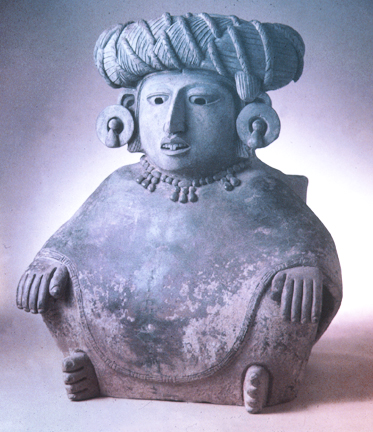The classic period saw the rise of larger ceremonial centers and cities of larger population. One such site was Monte Alban, on the western coast of Mexico in what is now the state of Oaxaca. The site indicates that it was once a large complex of palaces and ritual pyramidal structures. As in Egypt, the pyramid is found in many classic Mesoamerican cultures, and were built as if the people were trying to reach for the heavens, to get closer to their gods, to raise themselves to the sky. These pyramids also served as tombs, and were an outgrowth of simpler burial mounds, just on a larger scale. The architecture at Monte Alban is very impressive, and the buildings feature floors made of different colored clays, walls that were brightly pained in red, yellow, and purple. Throughout the plaza were the colossal stone heads, first seen in the Olmec culture during the preclassic. Within these temples and pyramids, vast amounts of pottery, figurines, jade, and magnetite mirrors were found. These mirrors were so highly polished that they can be used to start fires. A written language existed, but as yet has not been translated. A sophisticated calendar of 52 weeks was already in use as well, and was based on accurate astronomical observations. The city-states were at constant war.
The seated figure of a woman seen here is an urn from Monte Alban. The clay in this region is a fine grey in color. This noblewoman is wearing her finest jewelry, here a necklace of different sized and shaped beads and large earplugs. Her hair is elaborately braided and her teeth are clearly filed in what must have been a sign of beauty. She wears the huipil, a poncho-like garment still worn today in this region. Her eyes would have originally been inlaid with semi-precious stones.

Urn in the form of a seated woman, from Monte Alban, Earthenware
Classic period, 300-600 CE


